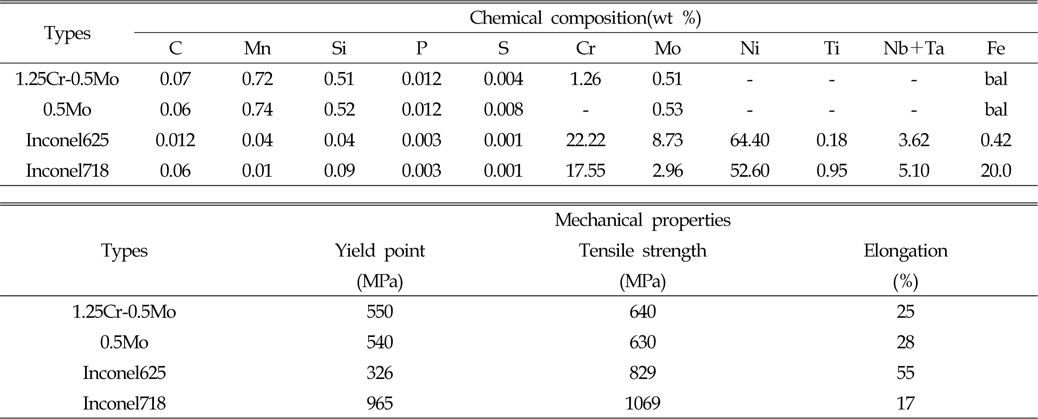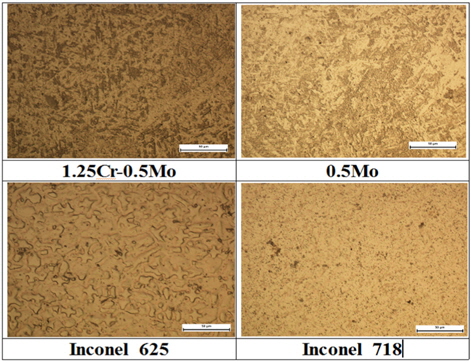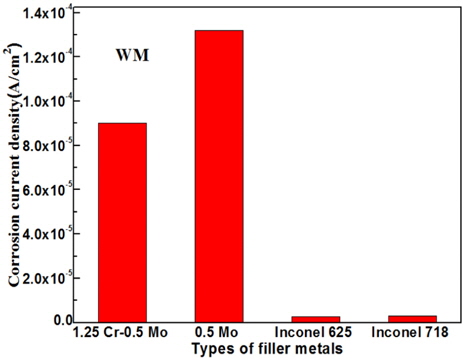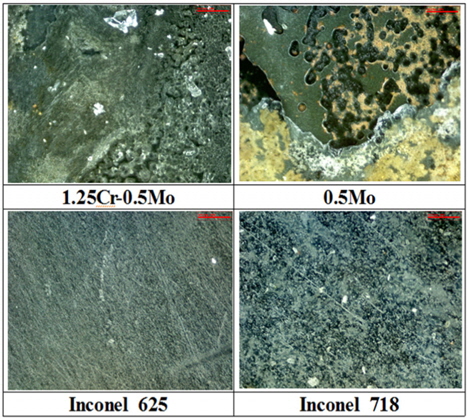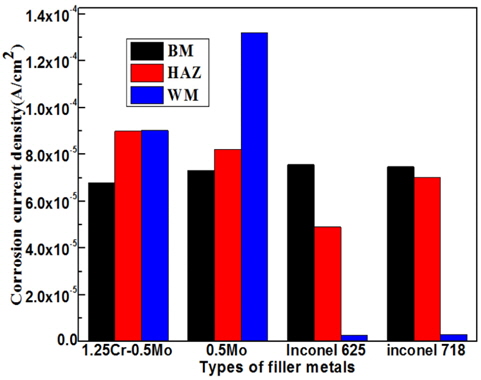1. 서 론
2. 사용 재료 및 실험 방법
2.1 용접재료 및 용접방법
2.2 실험 방법
3. 실험결과 및 고찰
Fig. 4
Time dependence of corrosion potentials for weld metals in the case welded with four types of electrode
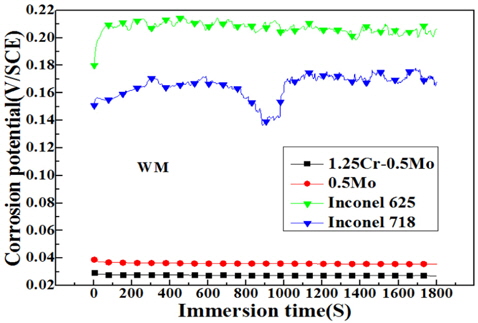
Fig. 5
Comparison of anodic polarization curves for weld metals in the case welded with four types of electrode
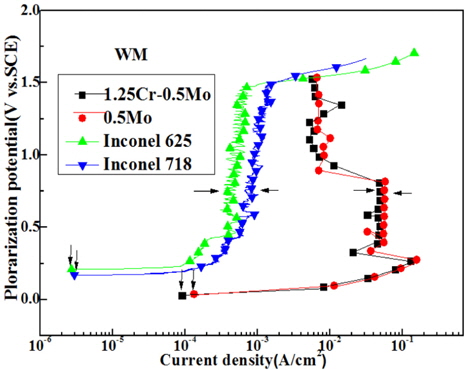

Fig. 9
Comparison of cyclic voltammogram curves for weld metals in the case welded with four types of electrode
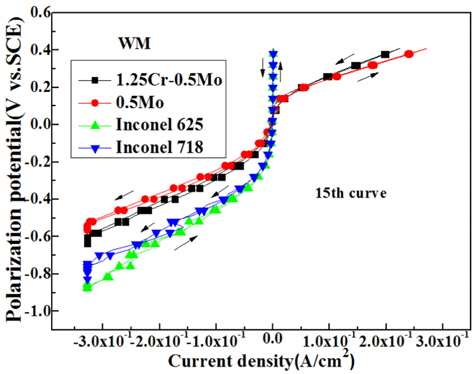
Fig. 10
Comparison of anodic polarization curves of heat affected zones welded with four types of electrode

Fig. 11
Comparison of corrosion current densities for heat affected zones welded with various electrodes

Fig. 12
Comparison of anodic polarization curves of weld, heat affected and base metal welded with Inconel 625 type of electrode
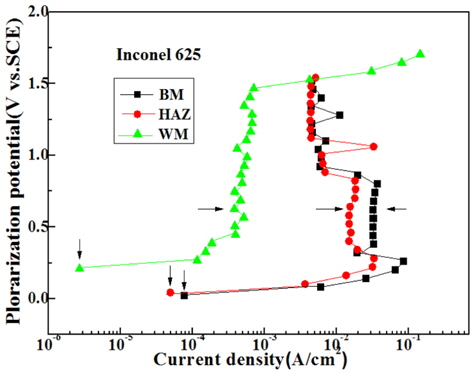
Fig. 13
Comparison of anodic polarization curves of weld metal, heat affected and base metal welded with 1.25Cr-0.5Mo type of electrode
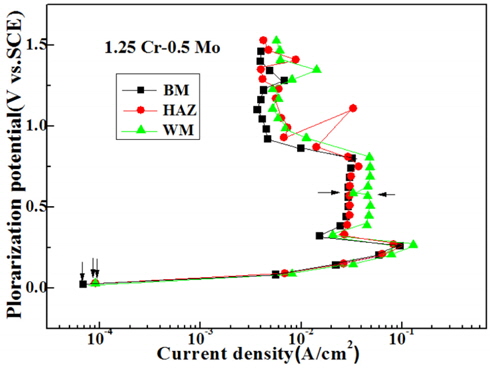
4. 결 론
(1) 모든 용접금속의 경도는 모재에 비해서 높은 값을 나타내었으며, 열영향부에서는 Inconel 718 용접재료의 경우가 가장 높은 값을 나타내었다.
(2) 용접금속의 내식성은 Inconel 625의 경우가 가장 좋았으며, 그 다음으로 Inconel 718 용접재료이었다. 또한 열영향부의 경우에도 같은 경향을 나타내었다.
(3) Inconel 625와 Inconel 718 용접재료의 용접금속이 모재에 비해서 내식성이 우수하였으나, 1.25Cr-0.5Mo과 0.5Mo 용접재료의 경우에는 오히려 모재가 용접금속과 열영향부에 비해서 내식성이 우수하였다.
(4) 결과적으로 각 용접부위에 대한 내식 특성의 변화는 용접재료 중 합금 성분의 종류와 함량에 영향을 받는 것으로 생각된다.






